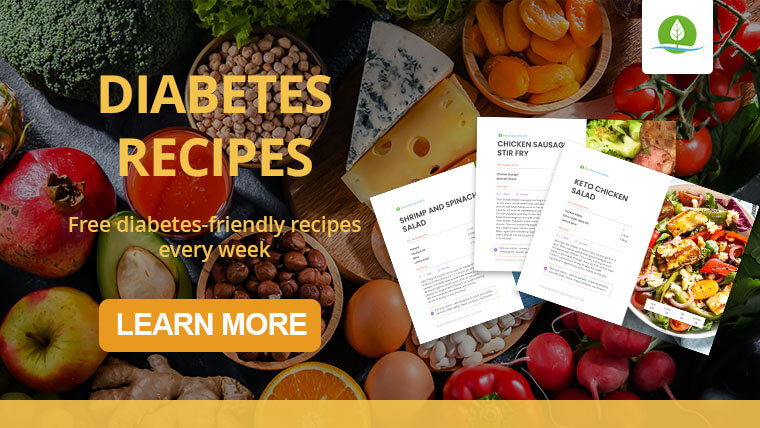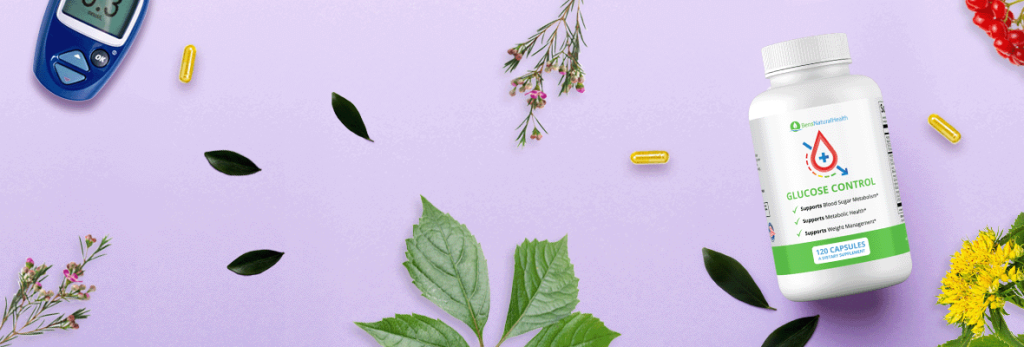- What is Trulicity?
- How does Trulicity work?
- Foods to avoid with Trulicity
- Can you drink alcohol with Trulicity?
- Foods to eat while taking Trulicity
- Other things to avoid while taking Trulicity
- Should Trulicity be taken with food?
- What is the best time to inject Trulicity?
- Any other safety concerns?
- How to reduce the side effects of Trulicity
- Conclusion
- Source
There are many new medications on the market for treating type 2 diabetes.
You might have seen commercials for some of these newer drugs and wondered what they are.
The FDA approved Trulicity in 2014, making it one of the newer medications used to treat diabetes.
What is Trulicity, and do you have to eat a special diet when you’re on it?
Read on to learn which foods you should avoid while taking Trulicity, which foods you include in your diet, and more.
What is Trulicity?
Trulicity is a brand name for the medication dulaglutide. Dulaglutide is part of a class of medications called GLP-1 receptor agonists and is used to treat type 2 diabetes (1). Trulicity isn’t meant to be taken by people with type 1 diabetes.
Trulicity is a non-insulin injection that comes in a pen (a device that contains and injects the medication). The common dosages for Trulicity range from 0.75 milligrams weekly to 4.5 milligrams weekly.
If you’re prescribed Trulicity, you’ll likely start at the lowest dose and increase it gradually per your healthcare provider’s guidance.
RELATED: How Long Does Trulicity Stay In Your System?
How does Trulicity work?
GLP-1 receptors in your pancreas help increase insulin secretion, which helps to lower your blood sugar levels. If you have type 2 diabetes, you likely have insulin resistance or don’t make enough insulin, which makes your blood sugar levels too high. Trulicity helps activate these GLP-1 receptors to boost insulin secretion.
GLP-1 receptor agonist medications like Trulicity also help reduce the secretion of glucagon, a hormone that raises blood sugar levels. GLP-1 receptor agonists activate these receptors to help control blood sugar levels.
Trulicity might help you lose weight because it helps reduce hunger and promotes fullness by slowing stomach emptying (2, 3). Losing weight if you’re overweight or obese can help improve insulin sensitivity and lower blood sugar levels. Therefore, Trulicity weight loss may help you to manage your diabetes.

Foods to avoid with Trulicity
There aren’t any specific foods or drinks that negatively react with Trulicity. However, since Trulicity is meant to help improve your blood sugar levels, it’s ideal to follow a healthy diet to help Trulicity do its job better.
While all foods can fit in a healthy diet, try to limit or avoid these types of foods when taking Trulicity which can raise blood sugar levels:
1. Fried foods
Fried foods can worsen nausea by delaying stomach emptying. Trulicity may cause nausea and stomach upset, especially as your body is getting used to it. If you experience nausea from taking Trulicity, you might want to avoid or cut back on fried foods.
Instead of fried foods, opt for those that are baked, grilled, or steamed. You can also try cooking with an air fryer for a crispy texture without the added fat.
2-5. Refined grains
There are two types of grains – refined grains and whole grains. Refined grains are stripped of their nutrient- and fiber-rich parts, leaving behind a lower-fiber, lower-nutrient grain.
These types of grains are more likely to raise your blood sugar levels. Refined grains can also negatively impact your cholesterol levels and heart health.
White bagels, flour tortillas, white bread, and white rice are just a few examples of refined grains you should avoid to help promote healthy blood sugar levels.
6-9. Foods with added sugar
Added sugar isn’t always easy to spot and is present in many other products besides sugary drinks.
Sugar is added to foods that might otherwise seem healthy, like yogurt, dried fruit, some nutrition bars, and even whole grain cereals.
Check the nutrition facts label to see how much added sugar is in each serving, and aim to keep your added sugar intake below 30 grams per day while taking Trulicity.
10-13. Sugary drinks
Sugary beverages are the leading contributor of added sugar in a typical Western diet. Drinks like soda, sweetened teas, sugary coffee drinks, energy drinks, and many others are high in added sugar.
For instance, one 12-ounce can of a standard cola provides 39 grams of added sugar, well beyond the recommended maximum of 24-32 grams daily.
Regularly drinking sugary drinks can make managing your blood sugar levels difficult. Poorly-controlled diabetes can lead to complications like heart disease, kidney disease, nerve damage, diabetic retinopathy (eye damage), and more.
Can you drink alcohol with Trulicity?
Alcohol isn’t forbidden on a Trulicity diet, but you should take caution when drinking alcohol while taking any kind of diabetes medication. Alcohol can lower your blood sugar by reducing the amount of sugar released by your liver, resulting in hypoglycemia (low blood sugar).
Trulicity doesn’t cause low blood sugar on its own. Excessive alcohol consumption could lead to low blood sugar, especially if you’re taking diabetes medications.
If you choose to drink alcohol while taking Trulicity, then try to eat a meal before you drink and avoid having more than one drink a day for women and more than two drinks a day for men. Binge drinking is more likely to cause low blood sugar than moderate alcohol consumption.

Foods to eat while taking Trulicity
1-5. Protein-rich foods
Foods like chicken, fish, cheese, unsweetened yogurt, and eggs are rich in protein and don’t raise your blood sugar levels significantly. According to the Plate Method for Diabetes, one-quarter of your plate should consist of protein at meals, and the same is true for a Trulicity diet.
Protein also helps boost satiety, which means it can help you stay fuller in between meals and might help reduce sugar cravings.
6. Nuts
Nuts are composed of healthy unsaturated fats, protein, and fiber. These healthy fats can also help improve your heart health, which is important when you have diabetes.
Eating a diet rich in heart-healthy fats (in place of saturated fats) may help reduce your risk of heart disease by promoting healthy cholesterol levels.
Fats and protein don’t raise your blood sugar, so they can be beneficial to include in a Trulicity diet. You should include protein with all meals and snacks to support stable blood sugar levels.
In addition, eating protein and fat with carbohydrates can help slow the rise in blood glucose after eating. For example, eating a handful of nuts along with some fresh fruit will likely raise your blood sugar less than if you just ate fruit by itself.
7-13. Whole grains
Grains are a type of carbohydrate, which are nutrients that are metabolized into blood sugar. However, whole grains are considered healthy, and carbs are a better choice than refined grains.
Whole grains are rich in fiber, a type of carbohydrate that doesn’t raise your blood sugar level. The higher the fiber content, the less impact the food will have on your blood sugar.
Some examples of whole grains are oatmeal, brown rice, whole wheat bread, bulgur, barley, and whole-wheat pasta. Whole grains are also richer in protein than refined grains like white rice and white bread, so they can be more filling with a smaller portion size.
14-42. Non-starchy vegetables
Most vegetables are considered non-starchy, which means they are low in carbohydrates. Non-starchy vegetables are rich in fiber, vitamins, and minerals, and can help boost your satiety without raising your blood sugar levels.
Starchy vegetables aren’t bad to eat when you have diabetes, but you should treat them more like grains in terms of how they raise your blood sugar. Examples of starchy vegetables include potatoes, corn, green peas, and winter squash.
Here are some non-starchy vegetables to include in your Trulicity diet – as you can see, there are several options to choose from.
- Artichoke
- Asparagus
- Beans (green, wax, Italian)
- Beets
- Brussels sprouts
- Broccoli
- Cabbage (green, bok choy, Chinese)
- Carrots
- Cauliflower
- Eggplant
- Green leafy vegetables (collard, kale, mustard, turnip)
- Jicama
- Kohlrabi
- Leeks
- Mushrooms
- Okra
- Onions
- Peapods
- Peppers
- Radishes
- Rutabaga
- Salad greens (chicory, endive, escarole, lettuce, romaine, spinach, arugula, radicchio, watercress)
- Sprouts
- Squash (cushaw, summer, crookneck, spaghetti, zucchini)
- Sugar snap peas
- Swiss chard
- Tomatoes
- Turnips
Other things to avoid while taking Trulicity
If you take Trulicity with another diabetes medication such as insulin or sulfonylureas, your risk of low blood sugar will be higher.
Try to avoid eating large meals, which may worsen nausea, a common side effect when starting Trulicity. Instead, try to eat smaller meals and snacks.
Should Trulicity be taken with food?
Because Trulicity is a long-acting medication with only once-weekly doses, you can take it with or without food. Eating consistent meals may help reduce any nausea or stomach upset as you get used to taking Trulicity.

What is the best time to inject Trulicity?
Try to take Trulicity on the same day every week. It doesn’t matter what time of day you inject Trulicity.
If you want to change the day of the week you take Trulicity, you can, just as long as it’s been at least three days (72 hours) since your last dose.
If you miss a dose of Trulicity and there are at least three more days (72 hours) until your next scheduled dose, take the missed dose and then continue with your regularly scheduled weekly doses. But if there are fewer than three days until your next dose, skip the missed dose entirely and resume your regular weekly injection schedule.
Any other safety concerns?
The most common side effects you may experience with Trulicity are:
- Nausea
- Diarrhea
- Vomiting
- Abdominal pain
- Decreased appetite
- Indigestion
- Fatigue
Rare side effects
There is a risk of developing thyroid cancer while taking Trulicity. Avoid Trulicity if you or any of your family have had medullary thyroid carcinoma (MTC), a type of thyroid cancer. You also shouldn’t take Trulicity if you have Multiple Endocrine Neoplasia syndrome type 2 (MEN 2).
How to reduce the side effects of Trulicity
To help minimize the side effects of taking Trulicity:
- Don’t increase your dose without the guidance of your healthcare provider.
- Take Trulicity once weekly on a schedule.
- Eat small meals and snacks, and avoid fatty foods and other foods that worsen any nausea you might experience from taking Trulicity.
- Stop taking Trulicity if you experience a lump or swelling in your neck, which could signify thyroid problems.
- Take over-the-counter medications for upset stomach, indigestion, and other minor gastrointestinal symptoms as needed while you get used to Trulicity.
Conclusion
While there aren’t any specific foods or drinks to avoid while taking Trulicity, eating a healthy diet low in refined grains and added sugars can better help you meet your blood sugar targets.
If you’re experiencing stomach upset from taking Trulicity, eating a bland, lower-fat diet can help as your body gets used to it.
Explore More







